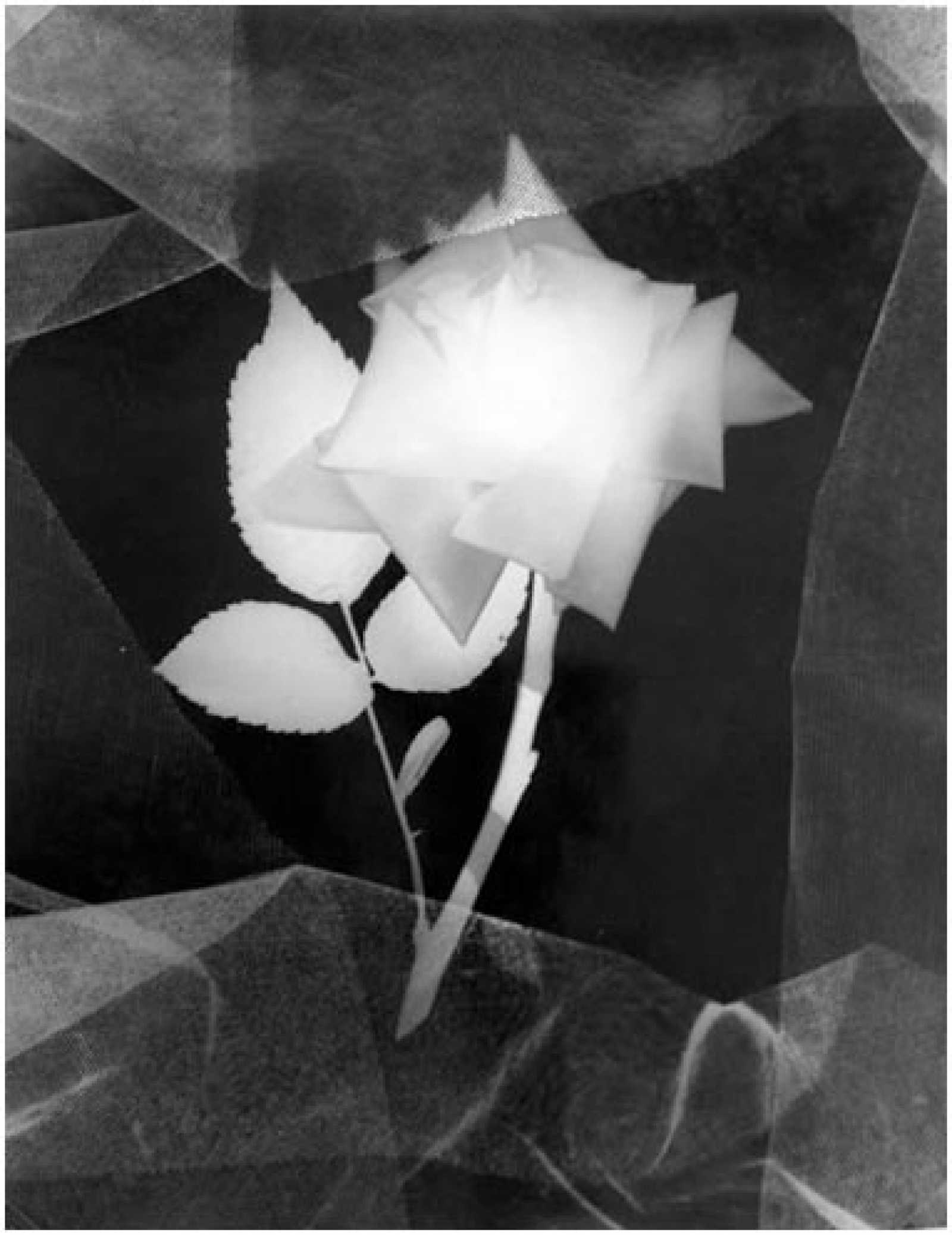Geza Vandor
Geza Vandor (Hungarian, 1898-1956) was born in Budapest where he worked in the film industry; he later moved to Paris to become a still photographer for popular magazines. Vandor also exhibited his work alongside artists and photographers including Man Ray, Cartier-Bresson, and André Kertéz. His work is influenced by the Parisian Surrealist movement, as well as the Russian constructionist photographs of the same period, which can be seen in the sharp angles, motion, and distorted viewpoint of Solarized Rose.
This work is a photogram, which is a type of photographic image made without a camera. Photograms are created by placing objects onto light-sensitive paper and exposing them to light, either artificial or natural. The resulting image appears in black, white, and gray tones, presented as a negative form depending on the density of the object depicted. This technique was often utilized by the Surrealists to transform ordinary objects into dreamy, mysterious, and uncanny imagery.
Geza Vandor (Hungarian, 1898-1956), Solarized Rose, ca. 1930, photogram, gelatin silver print, 10 5/8 × 8 3/8 inches. Gift of Joe and Pamela Bonino, 81-2013.

